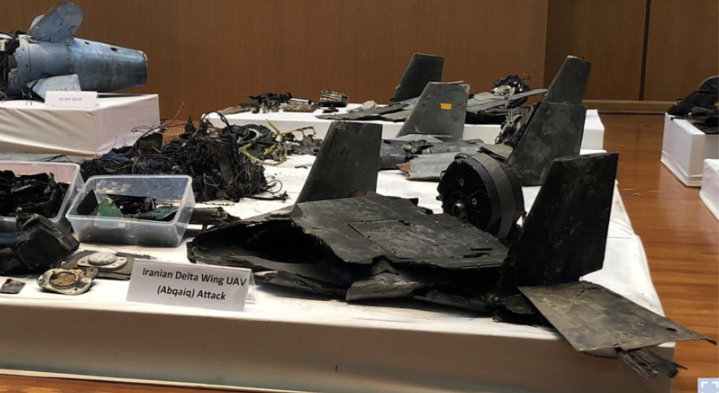Saudi Oil Plants Attacked, Economic and Political Turbulence Follow
Vivian Nereim / Bloomberg via Getty Images
Pictured Above: Missile wreckage from Saudi oil attack believed to be of Iranian origin
September 29, 2019
On September 14th, missiles and drones targeted and ravaged two Saudi oil facilities, sending the Brent oil market into a volatile pattern of turmoil. The attacks, which were waged against the Abqaiq facility and the Khurais oil field, instantly reduced the global oil supply by 5%, branding this attack as “the single-worst disruption in oil markets ever.” The global community lost more oil in this attack than in the 1990 oil embargo on Iraq and Kuwait during Saddam Hussein’s invasion. Given the international community’s heavy reliance on these lucrative plants, questions arise as to the origin of the attacks, the cause of the plants’ vulnerability, and the long-term political consequences of the attacks.
Responsible Party
In the immediate aftermath of the attack, members of the Houthi movement in Yemen claimed responsibility. Despite this and their historical tension with Saudi Arabia, there is more convincing reason to believe that they were not the perpetrating party. For one, there is little evidence that this group possesses the enhanced military technology used in these attacks. Moreover, an analysis of the missile debris suggests that they are of Iranian origin. In consideration of this and the fact that the missiles came from the northern direction of Iran, the Trump Administration has thus placed blame on Iran, which has yet to claim responsibility. According to a Saudi spokesman, 25 drones and missiles were deployed during the attack.
Economic Consequences
Following the attacks, oil prices surged 20%, Saudi oil production was cut in half, and Saudi oil exports were reduced by 5.7 millions barrels per day. Given that both targeted oil sites are maintained by the state-owned company Saudi Aramco, it was an explicit attack on Aramco that caused a massive and destructive ripel in the international economy. While Aramco is not currently publicly traded, a question arises as to how this would have affected Aramco had it been publicly traded. Surely, its stock would have tanked. This question, although speculative in nature, is granted consideration in light of the fact that company officials are considering launching its IPO (initial public offering) in the near future. Prospective investors are stained with the new fear that Aramco, which is viewed as a juggernaut of a profit-hog, is unable to defend itself as tensions in the Middle East escalate.
Despite Saudi Arabia having the 3rd highest defense budget in the international community, there are many factors that caused the vulnerability of these oil plants. For one, their defense arsenal is not designed for this particular genre of warfare; their arsenal is instead engineered to engage on attacking missiles that fly at much higher altitudes. Additionally, the distinct brightness of oil facilities at night, which is visible from miles away, alleviates much of the challenge in targeting them.
Political Realignments Follow the Attack
In May of 2018, the U.S. withdrew from the 2015 Iran nuclear deal after citing it as inadequate at preventing Iran from possessing a future nuclear arsenal. While this decision was initially met with disagreement from prominent European powers, the recent attacks, which are speculated to be caused by Iran, were quick to alter their collective position on this issue. UK Prime Minister Boris Johnson was the first to agree with Trump, saying “Let’s do a better deal.” Other European leaders such as French President Emmanuel Macron and Chancellor Angela Merkel of Germany have also voiced their opinion that a new and more effective deal must be pursued with Iran. Despite this, any new deal is still a ways away from being implemented.


